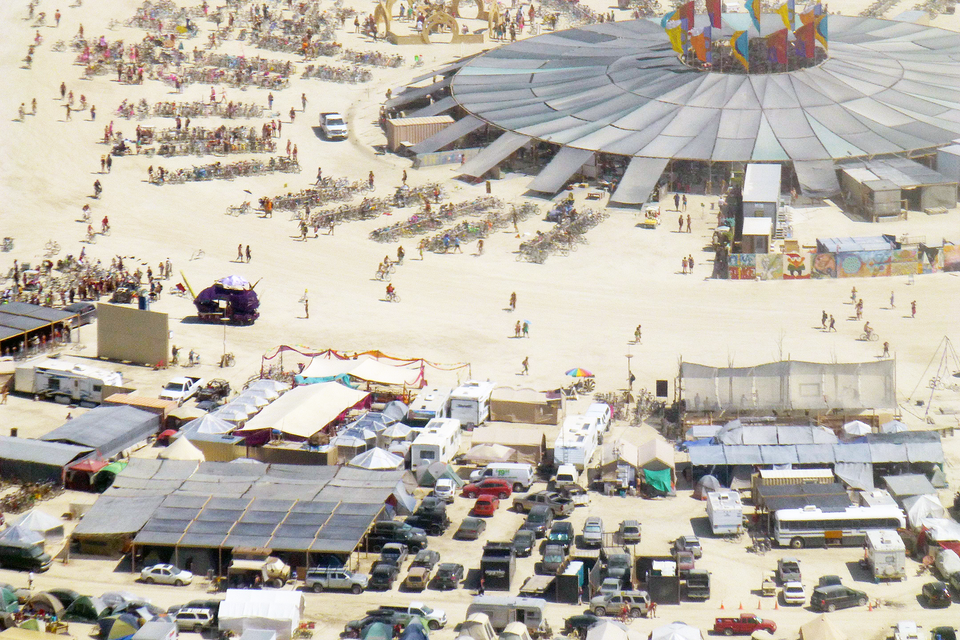
Frank Nuccio was on his second day at Burning Man this year when he realized he was running his pizza restaurant all wrong.
“I was out there in the temple with a few friends and there was nice music playing, and an amazing vibe,” said the Dallas-based restaurateur, who was at the festival for the third year in a row. He closed his eyes, and when he opened them, a thought popped in his head: “I’m going to educate people through the pizzeria.”
In the weeks since, Nuccio has begun overhauling his pizza joint, a North Dallas landmark called My Family's Pizza. (Locals may know it by its former name, Pizza By Marco.) He bought a reverse osmosis system that can filter 300 gallons of water at a time, sent out for onion bulbs to plant and threw out every product in his establishment that contains refined sugar. He's developing a secondary organic, GMO-free menu featuring pies with names like “Light” and “Vesica,” after the mystical symbol.
Call it an old-school win for Burning Man, the weeklong campout/art junket/pilgrimage that's increasingly turning into a Silicon Valley corporate retreat. The event used to offer an escape from the real world -- a desertscape where attendees bearing their own food, drink and shelter could stop thinking about monetary transactions and “focus on things that should be more important to us,” as Nuccio puts it.
But in the past few years, as Burning Man's attendance numbers have gone up, the playa, as insiders affectionately call the remote stretch of Nevada desert, has become home to the same hierarchies as anywhere else. While money is still technically invisible on site, it’s now possible to pay $10,000 beforehand to stay in a luxury tent staffed with a sushi chef and water trucks. Last year, Mark Zuckerberg flew in for a day via private jet, making this year’s giant Facebook thumb installation seem more of an endorsement of the social network than a critique.
And yet, Burning Man's appeal appears to be more potent than ever. Tickets to the coveted event have sold out for the past three years. More than 61,000 people attended this year, a record, including types one might not expect (P. Diddy was there, along with Stacy Keibler). Stigma isn’t really part of the equation anymore. Burning Man’s internal census, AfterBurn, found that only four percent of 2011 attendees lied point-blank to employers and acquaintances about their destination.
As the festival's popularity soars, instances of Burner culture seeping into regular life are becoming increasingly common, even beyond artist communities and Silicon Valley startups. A California pastor recently wrote in his local paper that he shrugged off the Sodom-and-Gomorrah-laced warnings of close family and friends to find “God’s kingdom” in the Nevada desert. And Nuccio's decision to "educate people" through his pizza restaurant will introduce dramatic changes to a 50-year-old Dallas institution.
So far, there’s been no backlash from Nuccio’s customers or employees, he told HuffPost. The classic menu remains, in case patrons don’t take to organic pies loaded with meaning -- like one he's designing to reference plant growth patterns, with spiraled ingredients.
He expects initial losses: Soda profits alone are down by half now that he’s selling cane sugar-based products. But Nuccio also says he’s enjoying running the restaurant for the first time in 12 years.
And he remains optimistic. His new menu, like Burning Man, is only getting more popular, he says. “Within a year,” he predicts, “it’ll outsell the regular stuff.”

